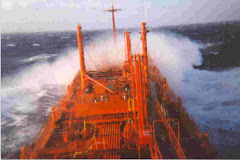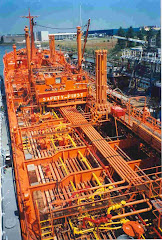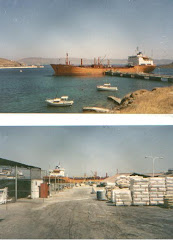The Irish Sea is of significant economic importance to regional trade, shipping and transport. Unlike Great Britain, Ireland has no tunnel to mainland Europe. Thus the vast majority of heavy goods trade is done by sea. Annual traffic between the two islands amounts to over 12 million passengers and 17 million tonnes of traded goods. There are five major companies who service these needs: 1) Seatruck Ferries 2) Norfolkline (now DFDS in Denmark) 3) P&O 4) Stena Line and 5) Irish Ferries.
Seatruck is a dedicated freight ferry service. They have two short sea routes and the longer Dublin-Liverpool service where they cater for trailers and unaccompanied freight. They are part of the Clipper Group. Seatruck has been growing capacity, although it has not been all smooth sailing. Its 6,000-gt ro-ro Riverdance (built 1977) was declared a constructive total loss (CTL) after grounding on Blackpool Beach in early 2008, while Spanish builder Astilleros de Huelva was very late delivering four 142-metre Heysham-max ro-ro containerships, which proved very expensive for them causing them to miss the strong markets when the Irish economy was booming prior 2008.
Norfolkline was established in 1961 but it has recently passed ownership from A.P. Moller-Maersk Group who then sold out to DFDS in which Clipper has been increasing its share lately. It operates long haul services between Belfast/ Dublin and Liverpool that are freight-oriented like Seatruck.
The other contenders, Stena, P&O and Irish Ferries focus mainly on ropax business. They also cooperate in joint services on certain routes. Stena has four short sea routes: Belfast-Stranraer, Larne-Fleetwood, Dublin-Hollyhead and Rosslane-Fishguard. P&O (now owned by the Emirates-based DP World) operates three routes: Larne-Cairnyan/Troon and Dublin-Liverpool (competing in this longer haul route with Seatruck and Norfolkline on freight and unaccompanied cargo). They sold their Larne-Fleetwood service to Stena in 2004. Irish Ferries operates two services: Dublin-Hollyhead and Rosslane-Pembroke. They focus on short sea routes and other activities as discussed below.
These are all diversified companies. Irish Ferries - owned by the Irish-Continental Group - operate ferry services directly to Continental Europe, they have invested in terminals and are also active in the container sector. Stena and DFDS are active in the Baltic ferryboat business. Aside from being one of the world's largest ferryboat operators, Stena is also a major tanker player in bulk oil shipping.
This business has been suffering from the Irish financial crisis with reduced traffic and earnings results with some pick up this year. The crisis hit hard the more lucrative freight and car market. Traditionally the financial returns in this business have been limited. CAGR for Irish Ferries in this sector is frequently negative.








